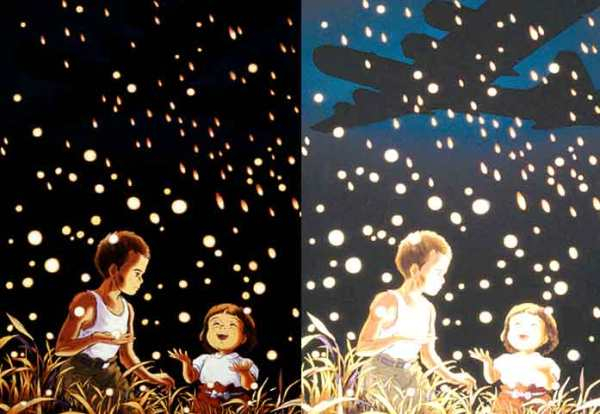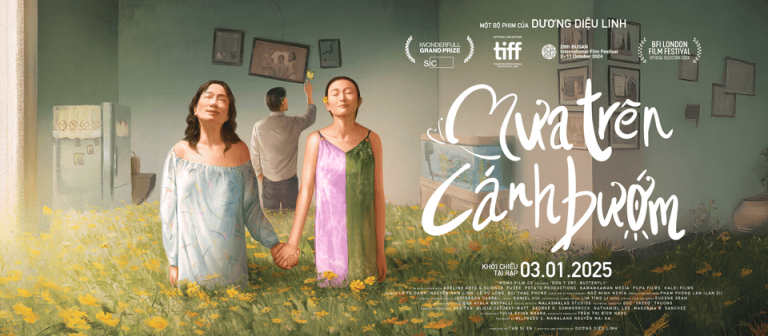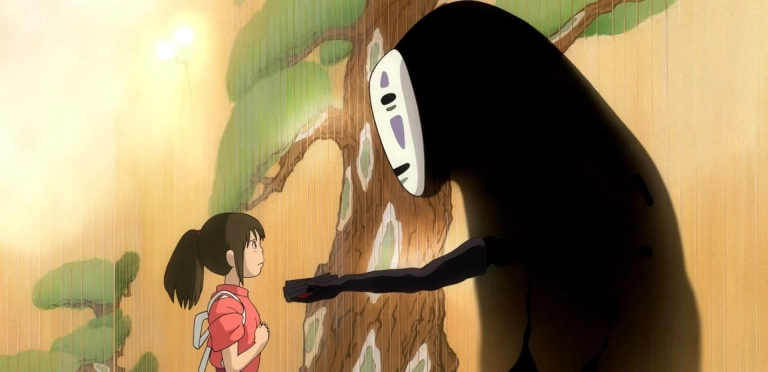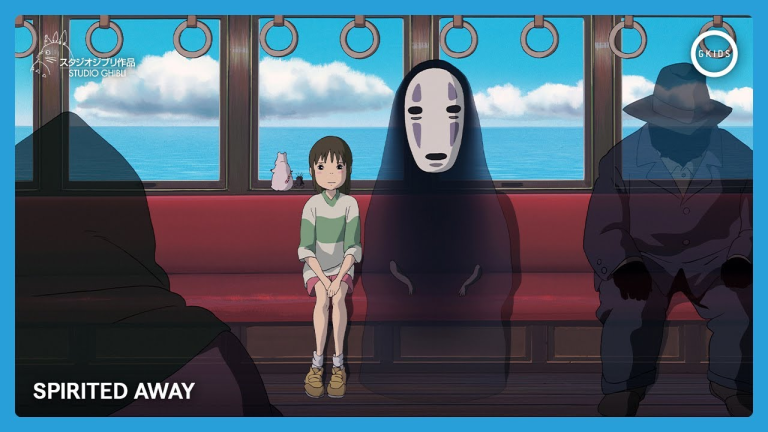Among all Studio Ghibli films, Grave of the Fireflies is arguably the most emotionally devastating. No matter how many times I rewatch it, I can’t hold back the tears.
This poignant story follows the lives of two siblings, Seita and Setsuko, during World War II, when Japan was engulfed in the flames of war. Their father, a navy officer, is away at the front and never returns, while their mother perishes in a bombing raid. Orphaned and vulnerable, Seita and Setsuko initially stay with their aunt, but her cold, resentful attitude soon drives them away. They end up taking refuge in a small abandoned shelter deep in the forest, trying to survive on their own.
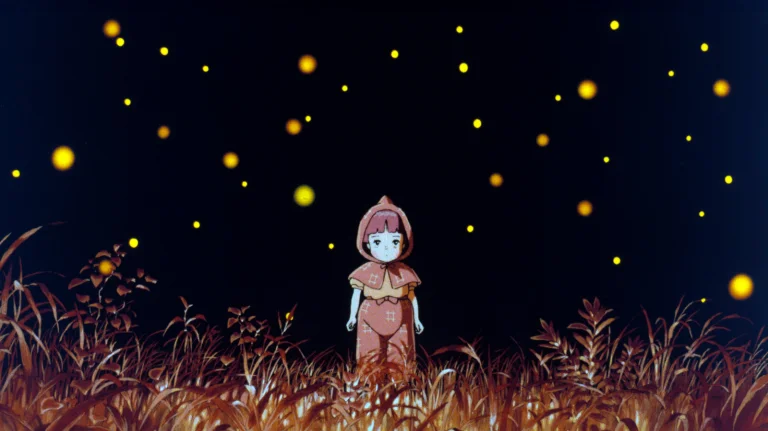
As an anti-war film, Grave of the Fireflies paints a harrowing picture of wartime Japan, where orphaned children are left to sleep in the woods and survive on meager rations like soybeans and dead frogs. Driven by hunger and desperation—especially with little Setsuko falling ill—Seita resorts to stealing fruits and sugarcane. He is caught, beaten, and dragged to the police station, all in front of his sister. With a bruised face, he turns away and weeps—not out of physical pain, but from the shame of becoming a bad example in her eyes.
Still, Setsuko, with her innocent heart, asks him, “Does it hurt? Should I call a doctor?” That moment shattered me. Her purity is like a firefly’s glow in the night—brief, flickering, beautiful. But when morning comes, the fireflies are gone. Setsuko dies, still just a child.
She suffers from diarrhea and severe malnutrition. But what breaks the heart most is a quiet moment: while Seita is away trying to earn money, little Setsuko, left all alone, eats dirt and quartz pebbles. In one of the film’s most haunting scenes, she sits by the river, playing rock-paper-scissors with her own shadow. Childlike and innocent, she molds dirt into rice balls and fills an empty fruit candy tin—once filled with sweets from Seita—with colorful stones. Later, in desperation, Seita eats those “offerings.”
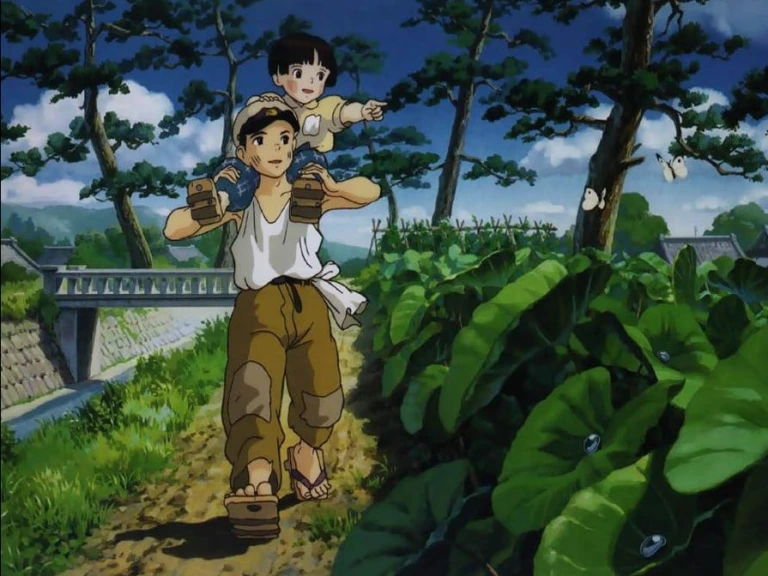
Before passing away, Setsuko holds up a piece of dirt and says, “Rice ball… I made it for you.” That moment destroyed me. Her gentle innocence amidst such cruelty moved me to tears. Seita and Setsuko are like fireflies in the night—flickering briefly before fading away. Their combined years don’t even add up to half a life, yet they endured immense suffering—nothing more than casualties of war.
The film opens with the line, “September 21, 1945—that was the day I died.” It begins with death. And it ends with the spirits of Seita and Setsuko sitting on a hillside, gazing at a futuristic city glowing with the lights of tall buildings. A mournful melody plays. The screen fades to black. And I’m left in quiet reflection, deeply moved.

